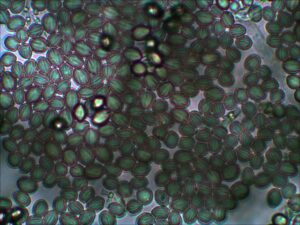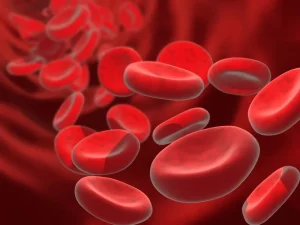What Is Hemangioma?
A hemangioma is a kind of birthmark on infants. They are commonly called “strawberry marks,” are bright red, and usually show up on the head, face, chest, or back at birth or within the first month of life. They may continue to grow until about 5 to 6 months of age, then fade and flatten as your infant grows and ages. Most finish shrinking by five years of age. Between 4 and 5% of all infants get hemangiomas; however, they are more common in white, female, twin, low-birth, or preterm babies.
Three Kinds of Hemangiomas
Hemangiomas are clusters of blood vessels that can range in size and appearance. Some hemangiomas are small, while others can be large or rubbery.
- Superficial: Bright red; looks like the surface of a berry
- Deep: Blue tint; forms under the skin, making skin look swollen
- Mixed: Combination of superficial and deep
What if I think my baby has a hemangioma?
Historically, we recommended that parents wait and see how their infants’ hemangiomas developed; however, this is no longer recommended. Contact your pediatric healthcare provider if you think your baby has a hemangioma. If you are able, send a photo of your baby’s mark to your provider and schedule a visit. Important information to share with your provider includes an image, size, location, and number. For example:
“My baby has one large, red bump on the right side of their forward, 1 inch by 0.5 inches.”
Hemangioma Treatment
Most hemangiomas will fade and flatten on their own. However, in some cases, a hemangioma needs to be treated. Depending on the placement (e.g., near the eyes or nose), it can impact your child’s normal function. Some hemangiomas can cause skin breakdown and open sores. Also, they can cause permanent changes to the skin that distorts growth. Hemangiomas can also occur internally.
Indications for Treatment
- Eyes: Affect vision; may cause disfigurement
- Nose: May cause disfigurement; block breathing
- Ears: May cause disfigurement; impact hearing
- Lips, cheeks, or neck: Increased risk of skin breakdown
- Chin and jaw: High risk of scarring; may cause disfigurement
- Five+ in any location: Associated with liver masses
- Arms: Increased risk of skin breakdown; may cause permanent skin changes
- Groin: Increased risk of skin breakdown
- Lower back: Increased risk of skin breakdown; may indicate underlying anomalies
Some topical medications or steroid injections can slow or stop the growth of a smaller, localized hemangioma. In rare cases, a beta-blocker that typically treats high blood pressure, or oral steroids, are used to treat hemangiomas. Finally, surgery or laser treatment can be used for extreme cases.
Your provider may also refer you to a pediatric dermatologist.
For questions or comments, please respond to this post or contact us!







